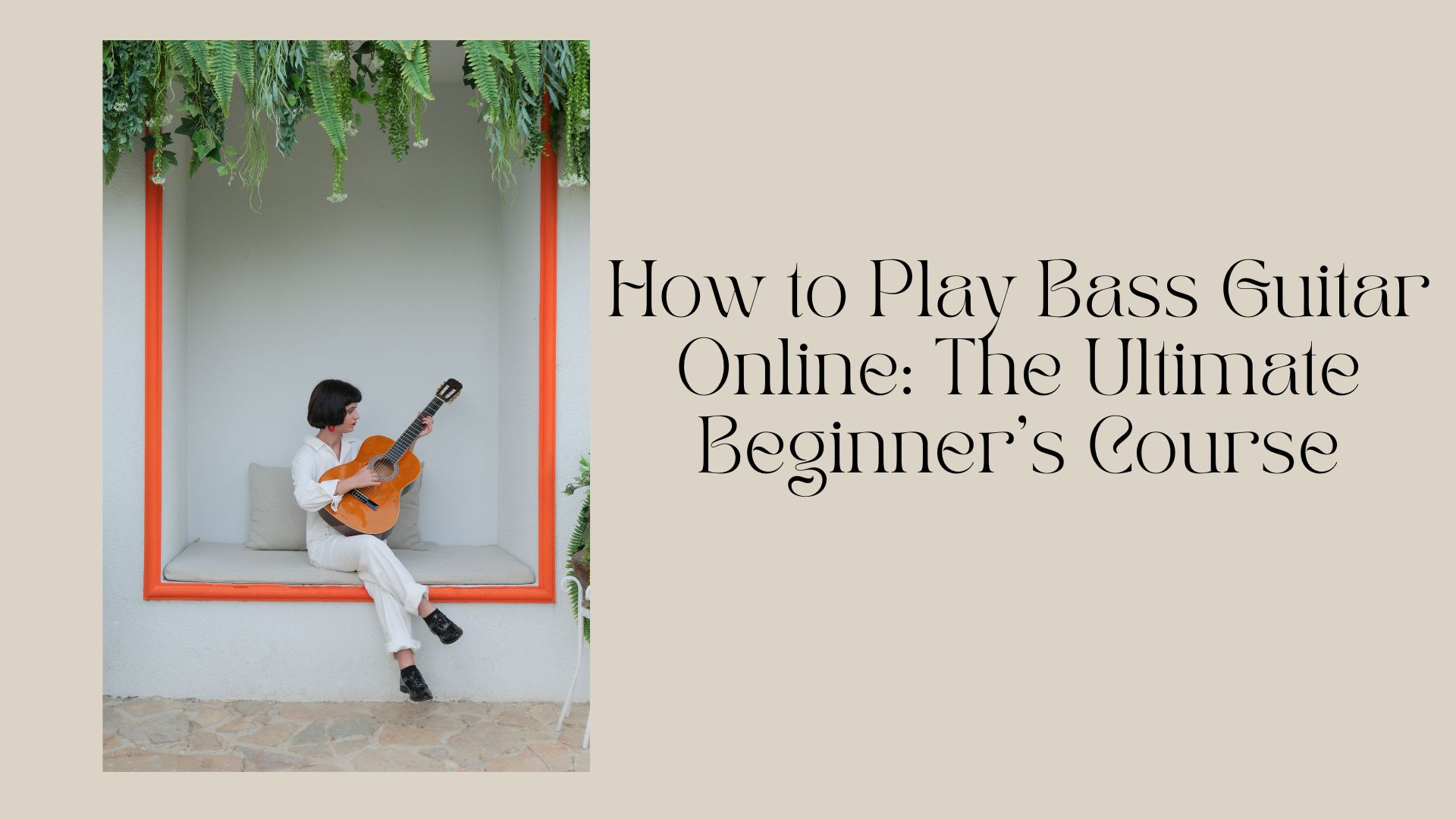Introduction
The bass guitar is an essential instrument in any band, providing rhythm and groove that hold a song together. Learning to play the bass online is now easier than ever, thanks to a wealth of online courses, tutorials, and interactive apps. This guide will take you through the ultimate beginner’s course for learning bass guitar online, covering the best resources, techniques, and tips to get you playing like a pro.
Choosing Your Bass Guitar
Before diving into online lessons, selecting the right bass guitar is crucial. Here are a few key factors to consider:
- Number of Strings: Most beginners start with a four-string bass, but five and six-string basses are also available.
- Scale Length: A standard bass guitar has a 34-inch scale length, while shorter-scale basses (30 inches) are easier for beginners to handle.
- Body Type: Choose between solid-body, semi-hollow, or hollow-body bass guitars based on your preferred sound and comfort.
- Budget: Entry-level models like the Fender Squier Precision Bass or Yamaha TRBX174 are great for beginners.
Essential Bass Guitar Equipment
Apart from the bass guitar itself, you will need a few essential accessories:
- Bass Amp: A small practice amp like the Fender Rumble or Ampeg BA-108 is a good start.
- Instrument Cable: A high-quality cable ensures a clear sound.
- Tuner: Clip-on tuners or tuning apps help keep your bass in tune.
- Strap: A comfortable strap allows you to practice while standing.
- Metronome: Helps in maintaining a steady tempo.
- Headphones: Useful for silent practice when using an amp with a headphone jack.
Learning the Basics
Understanding the Bass Guitar Parts
Familiarize yourself with the different parts of your bass, including the body, neck, headstock, frets, tuning pegs, pickups, and bridge.
Tuning the Bass
Most bass guitars are tuned to standard tuning: E-A-D-G (from lowest to highest string). Use a tuner or an online tuning app to ensure accuracy.
Holding the Bass Correctly
- Sit or stand with a straight posture.
- Position the bass so that the neck is at a slight upward angle.
- Use a strap to distribute the weight evenly.
- Keep your fretting hand relaxed while playing.
Plucking Techniques
- Fingerstyle: Use your index and middle fingers alternately to pluck the strings.
- Picking: A guitar pick provides a more aggressive sound.
- Slap and Pop: A funk technique where you slap the string with your thumb and pop it with your fingers.
Fretting Techniques
- Use the tips of your fingers to press the strings down firmly.
- Keep your thumb behind the neck for better control.
- Play close to the fret to avoid buzzing sounds.
Beginner Bass Exercises
Open String Exercises
Practice plucking each open string slowly to develop coordination.
Basic Finger Exercises
Play the 1-2-3-4 exercise, where you press the 1st, 2nd, 3rd, and 4th frets on each string sequentially.
Scales and Arpeggios
Learn the major and minor scales to improve finger strength and musicality.
Common Mistakes to Avoid
- Not using a metronome: Timing is crucial for a bassist.
- Pressing too hard on the frets: Causes hand fatigue.
- Ignoring finger exercises: Limits dexterity and speed.
- Skipping music theory: Learning about notes, scales, and chords enhances your playing.
Advancing Your Skills
Once you’re comfortable with the basics, explore more advanced techniques like:
- Walking Bass Lines: Common in jazz and blues.
- Slap Bass: Funky and percussive.
- Tapping: Using both hands on the fretboard.
Conclusion
Learning to play bass guitar online is an exciting journey that offers flexibility and accessibility. By selecting the right gear, following structured lessons, practicing regularly, and avoiding common mistakes, you can progress from a beginner to a skilled bassist. Keep practicing, stay patient, and enjoy the groove!

